Bachelor exchange in Buenos Aires
Welcomed with open arms, I knew Mansion Paloma would feel like home very soon. It is a cosy student residence located in Belgrano, hosting 12 students of which the majority is Latin-American. I made a reservation well in advance as I was afraid not to find what I was looking for after arrival. Luckily it worked out for the best!
The weekend started off slowly as I was tired and didn’t have my luggage until Saturday night. Though it gave me the opportunity to get to know my Spanish-speaking housemates by cooking together and drinking local beers in our patio: the perfect place for a relaxed evening. Also, I was introduced to Calle Florida and its money traders who whisper ‘cambio, cambio, cambio’ to every tourist walking by.
In an attempt to inspire confidence in the local peso and reduce inflation, the Argentinian government has introduced tough currency change restrictions on its residents. This has led to the emergence of a black market which means that people cannot only change their money at an official rate, but also at an unofficial, better one which is called the blue rate. To give you an idea of the difference between the two, the official rate is around 9 pesos per dollar whereas the blue rate is around 13 pesos per dollar. So even though taking plenty of cash contradicts the usual advice to tourists travelling abroad, many visitors to Argentina have been doing just that to take advantage of the blue rate.
On Sunday I finally started exploring the city with some other exchange students and I haven’t had a moment to rest since.
My Mexican roommate already began to call me ‘Chica de la calle’, which basically means ‘Street girl’.
Although the actual fall semester will only start the beginning of August, Monday the 13th of July was our first day at Universidad Torcuato di Tella. It namely designed a three-week intensive Argentine Culture and Language course for exchange students so that they achieve a full and active insertion in the Argentinian academic experience and life prior to the semester kick-off. The course takes place on Monday to Friday from 14.00 until 18.00.
To get to uni we first took the metro for only two stops and from there a shuttle bus. The shuttle for di Tella students runs every 20 minutes and, more importantly, is for free! The university itself is a well-known university founded in 1991 and so far its remarkably modern campus seems to provide a great learning environment.
Jan Ko
11 chapters
15 Apr 2020
La chica de la calle
July 21, 2015
|
Buenos Aires
Welcomed with open arms, I knew Mansion Paloma would feel like home very soon. It is a cosy student residence located in Belgrano, hosting 12 students of which the majority is Latin-American. I made a reservation well in advance as I was afraid not to find what I was looking for after arrival. Luckily it worked out for the best!
The weekend started off slowly as I was tired and didn’t have my luggage until Saturday night. Though it gave me the opportunity to get to know my Spanish-speaking housemates by cooking together and drinking local beers in our patio: the perfect place for a relaxed evening. Also, I was introduced to Calle Florida and its money traders who whisper ‘cambio, cambio, cambio’ to every tourist walking by.
In an attempt to inspire confidence in the local peso and reduce inflation, the Argentinian government has introduced tough currency change restrictions on its residents. This has led to the emergence of a black market which means that people cannot only change their money at an official rate, but also at an unofficial, better one which is called the blue rate. To give you an idea of the difference between the two, the official rate is around 9 pesos per dollar whereas the blue rate is around 13 pesos per dollar. So even though taking plenty of cash contradicts the usual advice to tourists travelling abroad, many visitors to Argentina have been doing just that to take advantage of the blue rate.
On Sunday I finally started exploring the city with some other exchange students and I haven’t had a moment to rest since.
My Mexican roommate already began to call me ‘Chica de la calle’, which basically means ‘Street girl’.
Although the actual fall semester will only start the beginning of August, Monday the 13th of July was our first day at Universidad Torcuato di Tella. It namely designed a three-week intensive Argentine Culture and Language course for exchange students so that they achieve a full and active insertion in the Argentinian academic experience and life prior to the semester kick-off. The course takes place on Monday to Friday from 14.00 until 18.00.
To get to uni we first took the metro for only two stops and from there a shuttle bus. The shuttle for di Tella students runs every 20 minutes and, more importantly, is for free! The university itself is a well-known university founded in 1991 and so far its remarkably modern campus seems to provide a great learning environment.
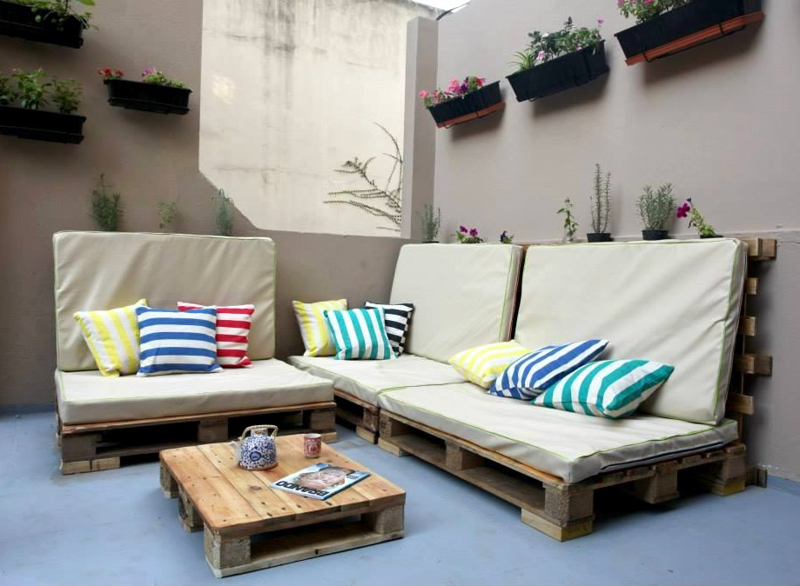
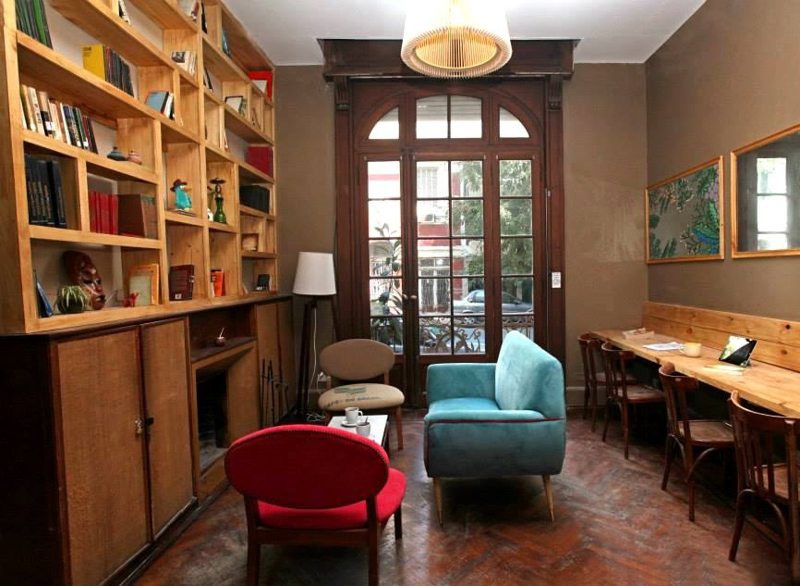
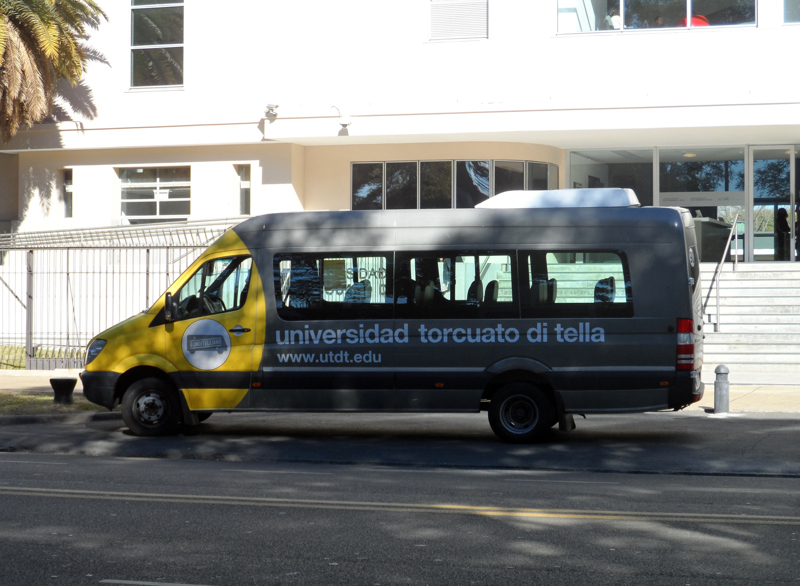
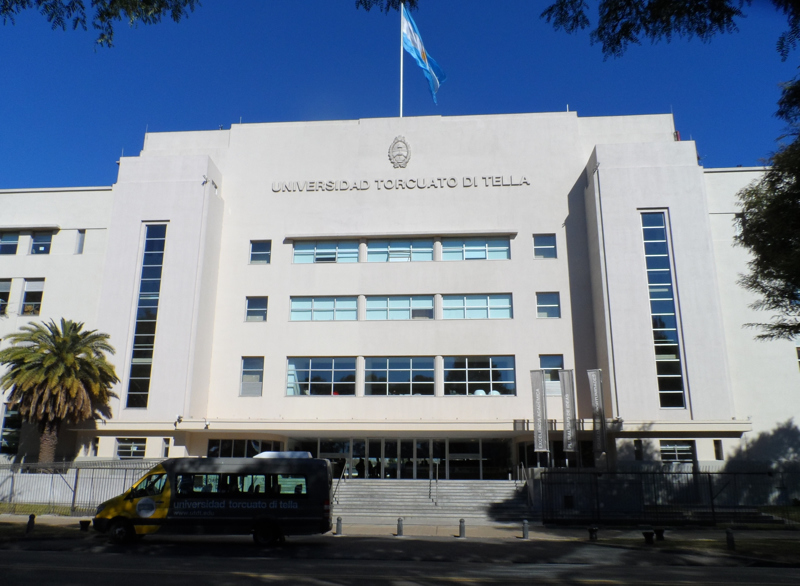
In the morning we had an orientation session about the city, the university services, and some more practical matters. For lunch we had empanadas with all exchange students and then at 14.00 our first class. In the meantime we have already had six days of classes, and until now it has been pretty interesting. For example, during our first class we discussed the Argentinian accent.
El español rioplatense is a Spanish dialect found in the basin of the Rio de la Plata, in Argentina and Uruguay. Compared to the Spanish and Costa Rican accents I heard before, the Argentinian accent is an entirely different beast. It has been influenced by European languages, particularly Italian, which has had an interesting effect on the pronunciation. Locals for example pronounce their ‘ll’ as ‘sh’ instead of ‘y’ as I have learnt in previous courses. Also, instead of ‘tú’ they use ‘vos’, which doesn’t exist in most textbooks. Other than the Argentinian accent there are three other characteristics that caught my attention.
1. Argentinian helpfulness
Argentinians are very helpful towards foreigners. At least I made that experience. If I hadn’t been offered help many times, I would not even have survived my first week here.
Buenos Aires is so large that, even though the streets are structured like in New York, it is easy to get lost. What makes it even more complicated to navigate is that the city’s transportation system contains around 200 buses without evident timetables. It could be the case that you are waiting for the bus for 40 minutes and then all of a sudden three buses of the same line arrive. Being Dutch and used to things being organized, on time and regulated, getting used to the transportation system is not easy, not easy at all.
2. Argentinian hospitality
Argentinians love to invite people over. I found out when I met my buddy last Wednesday. The idea of the buddy system organized by Universidad Torcuato di Tella is to match international exchange students with local students. The aim is to help new exchange students to get settled in a new environment and to get to know the local culture. My buddy, Popa, has already invited me and my fellow exchange students several times. To give you an idea, on Wednesday for lunch, on Thursday for dinner in an Armenian restaurant with her friends, on Friday for dinner and at an Argentinian restaurant for her friend’s birthday party and drinks afterwards, and then on Saturday one of her friends invited us for dinner at her place with her friends while my buddy wasn’t even there. All being amazing experiences!
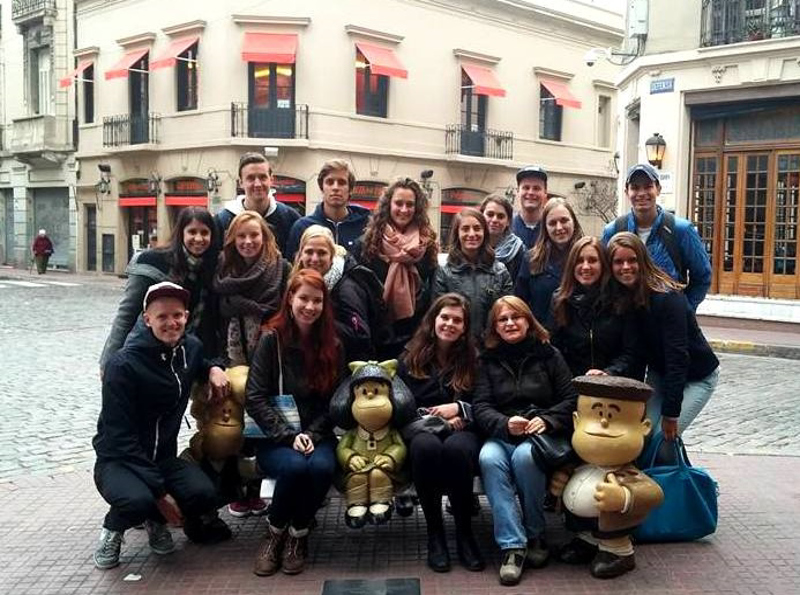
Likewise, my Spanish teacher invited my friend Thomas to a walking tour we did as a part of the Argentine Culture and Language course, even though he is not in our exchange programme. He is going to do an exchange in neighbouring country Chile, but decided to come and visit us first!
3. Argentinian lifestyle
Siestas are taken in the afternoon, and dinner is eaten late into the night. Most restaurants do not even open until 20.00 and then dinner most often lasts four to five hours. Interestingly, they are not trying to turn tables here. As the days wore on, and we began to imitate the locals, our days started later and later. Saturday evening when we had dinner at Popa her friends’ place, we were supposed to meet at 20.00, but arrived at 21.00 and didn’t leave until 02.30.
In Buenos Aires, the words early and late shouldn’t exist in the dictionary because neither of them happen. Showing up on time, is really just showing up early. Showing up late, is really just showing up on time. This is also true in the classroom setting, as even some teachers show up half an hour late. It is just not a big deal, which might also explain why people here NEVER run for the bus and why the escalator to the metro does not have a passing side...
Share your travel adventures like this!
Create your own travel blog in one step
Share with friends and family to follow your journey
Easy set up, no technical knowledge needed and unlimited storage!